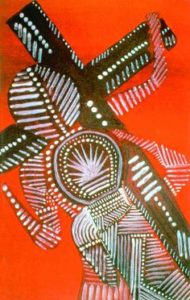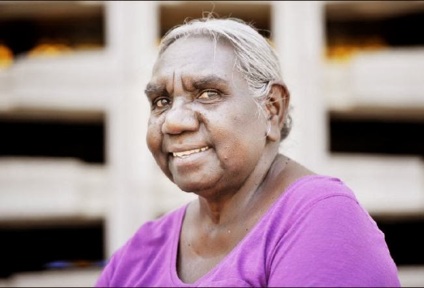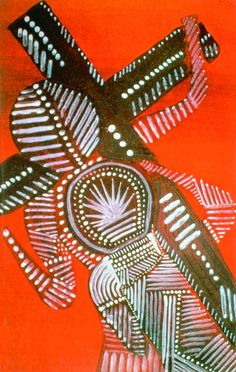Our common lot (Click on the sermon title for a .pdf copy)
Luke 23:13-26
March 20, 2016
Who killed Jesus?
Pilate did. He was the one, the only one, with the authority to have Jesus put to death, and that was the sentence he pronounced. Reluctant or not, he made the decision. Pilate, the agent of the Roman Empire in Judea, killed Jesus.
But who goaded him into doing it? Who was clamoring for Jesus’ death? The crowd. The nameless, faceless “they.” “They” did it.
This is our common lot, the common lot of all of humanity, that we are subject to the push and pull of the “they.” It may be hard to identity its origins or even its intent, but the will of the crowd creates the environment in which all of us must live. The power of what “they” think and what “they” do is enormous, hemming us in and pushing us along and limiting our options. You may change one mind or silence one demagogue or reconcile with one enemy, but the power of the “they” is undiminished.
This is our common lot, that so much of our lives are controlled by forces — anonymous, faceless, nameless forces — outside ourselves.
In Jesus Christ, the man of Nazareth, you have come to us and shared our common lot.
Do you realize what an astonishing statement that is? In Jesus, God has come to us and shared our common lot! God, our creator, the creator of all that is, that one above and beyond everything that is, the one without beginning or end, the one who is mystery and glory and spirit, has shared our lot, has known, firsthand, what it is to be human.
But sharing our common lot is more than simply being like us, more than simply experiencing human joys and sorrows, hopes and pains and temptations. It is being one of us, sharing our common lot, knowing what it is to be pushed and pulled and judged and ostracized and condemned by the “they” — to be abandoned because of fear, to be betrayed because of jealousy, to be treated unfairly and judged unjustly by the powers that be, who are the powers that be only because of the “they,” and to die, not a happy death, a natural human death, but a humiliating, soul-crushing, bitter and senseless death.
This is our common lot, that we are members of a race, a human race, that is inexorably divided against itself, that we are members of a crowd that executes its own brothers and sisters, that oppresses the weak, that is threatened by anyone who is different, that hates anyone who doesn’t go along, that makes life miserable and untenable, not just for those it turns on, but for all of us.
That was Simon’s lot. He was just there. He just happened to be there. He was coming into the city, just as the parade of soldiers and condemned criminals and onlookers was going out, headed out of the city toward Golgotha, the killing ground.
Simon came from Cyrene, a city on the north African coast, in what is modern Libya. He was North African, perhaps a black man. There is a man mentioned in the book of Acts among the church leaders in Antioch, some of whom did come from Cyrene, named Simon the Black.
He may have been black or he may not, but he was almost certainly Jewish. There was a population of Jews in Cyrene and he had come to Jerusalem. Why? Because it was festival time. It was Passover.
In any case, black or Jewish or both, he was a member of the “out” class, and it was he who was pressed into service, forced to bear Jesus’ cross, by the Roman soldiers, because he was a member of the “out” class. He was commandeered, taken into custody, exploited for no reason other than being other.
He was made to share Jesus’ lot, but Jesus had already shared his lot! Jesus was “other,” a member of the “out” class, as a Jew, as a dissident Jew, as a friend of the poor, as a friend of the other.
Jesus shared Simon’s common lot, and the result? The result was this: Simon is remembered, by name, in three of the gospels, and tradition has it that he became a follower of Jesus, a leader in the new church, perhaps even the key leader in the missionary church at Antioch known as Simon the Black!

This is a painting of Jesus and Simon.
It is the fifth in a series of paintings of the stations of the cross done by Miriam-Rose Ungunmerr.
This is Miriam, a member herself of the “out” class, an aboriginal woman from Daly River in the Northern Territory of Australia.
 She is “other” because she is an Aborigine and because she is a woman. It is unusual for a woman in her culture to paint, since that privilege is generally reserved for men.
She is “other” because she is an Aborigine and because she is a woman. It is unusual for a woman in her culture to paint, since that privilege is generally reserved for men.
She painted scenes from the passion of Jesus, the traditional “stations of the cross.” But what is an Aboriginal woman doing painting scenes drawn from a Western religion? Hasn’t she been co-opted by the colonial powers, by the religion and culture of the crowd, alienated from herself and her own authentic identity by the will of the “they?”
 Look for yourself! What do you think?
Look for yourself! What do you think?
This is not our Jesus. This is not a Western Jesus. This is her Jesus!
Christianity as a human institution may be embedded in Western culture and certainly tainted at times by Western culture, but the way of Jesus itself does not belong to the West or to any one nation or to any one culture. I hope that has been one of the lessons of our Lenten series: that Jesus may be seen, genuinely seen, through many different eyes, and that Jesus belongs to all of us — Korean and Masai, Balinese and English, Filipino and Salvadoran, Aboriginal and Cameroon and Brazilian and Ethiopian. In Jesus Christ, the man of Nazareth, you have come to us — to all of us, to each of us — and shared our common lot.
 Look at Miriam’s image. It is different from all the others. Which of the figures is Jesus and which is Simon? I had to read her own notes before I knew. She says of her painting of the third station that the patterns on Jesus’ body “show the physical stress he is under” and that “the circles on his head indicate the pain and sorrow locked up inside him.”
Look at Miriam’s image. It is different from all the others. Which of the figures is Jesus and which is Simon? I had to read her own notes before I knew. She says of her painting of the third station that the patterns on Jesus’ body “show the physical stress he is under” and that “the circles on his head indicate the pain and sorrow locked up inside him.”
But in her painting of the fifth station, this painting, “the pattern on Jesus’ head is open [indicating] a transfer of grace to Simon to strengthen him.” So Jesus is the figure behind and Simon the figure in the foreground, his head circumscribed by circles.
So are pain and sorrow locked up inside Simon? The pain and sorrow of this moment? The pain and sorrow of a lifetime? But there is something else there, too. Do you see it? The bright rays radiating outward and upward from within him, a sunrise! Being with Jesus, being joined to Jesus, is for Simon the dawn — the dawn of faith, of new strength, of new life … of resurrection!
Miriam sees what is inside and she shows us not what Jesus looks like, but what he does, what he does for Simon and what he does for us. Jesus transforms us! By sharing our common lot, Jesus utterly transforms our common lot. He sets us free from the tyranny of the crowd and from the tyranny of death. He changes the course of history. He alters the storyline. It’s no longer about the irresistible and death-dealing power of “they.” It’s now about the transforming and life-giving power of “we.”
This is now our common lot, to walk with Jesus, to walk together with Jesus the path that leads not to death, but to life. In Jesus Christ, the man of Nazareth, you have come to us and shared our common lot. Shared your common lot. May Jesus make the sun rise … in you!
